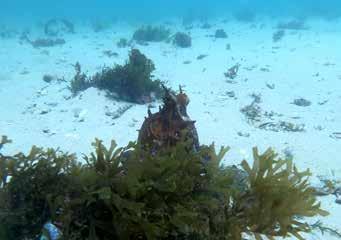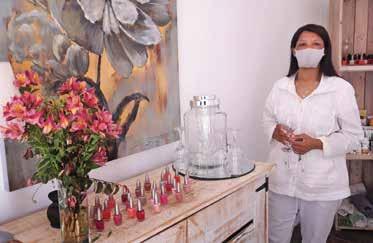9 December 2020
www.thevillagenews.co.za
21
What lurks below By Jax Bath
T
his week’s ocean adventure found its home in the biodiversity hope spot of False Bay, which has been in the spotlight over the past few months due to the release of the critically acclaimed documentary, My Octopus Teacher. The departure from Walker Bay was in part due to the windy conditions that we have experienced along the Whale Coast for the past week, but admittedly, mostly due to a dire need to scuba dive again for the first time since lockdown. It is my firm belief that every single person should try scuba diving at least once in their lives. It is the most awe-inspiring experience I have ever had, and after qualifying last year, it is safe to say that I am hooked for life. With a no-sea day to spare, I made my way over Sir Lowry’s in search of a sheltered spot to get into the water.
We’re lucky to live along a stretch of coast with well-defined bays, which can provide some reprieve from the wind, depending on what direction it’s blowing from. If you’re looking to explore, by boat, by foot or even with a snorkel, it’s best to find a stretch of sea buffered by some sort of landmark. De Kelders provides some great snorkelling at this time of year, sheltered from the South Easter, but looking to do some scuba dive, I made my way to False Bay.
There are multiple, stunning dive sites in this corner of the Atlantic. Giant kelp forests in the shallows give way to pinnacles covered in urchins and anemones in the deep. Shipwrecks boast cues from the past and a host of life, reminding us of nature’s ability to reclaim what we leave behind. Sea fans, seals and shy sharks are just some of the glorious creatures that one might encounter and with every dive, there is the thrill of not knowing what incredible sight may be just around the bend.
Due to the strong winds, my instructor Joe opted for our old faithful, Long Beach. This dive site is located in Simon’s Town and is in the unique position of being protected from almost every
wind direction. Despite the choppy surface water, the ocean below is an oasis of life. When I tell customers, friends and even other divers this, there is often a look of disbelief, given the frigid temperatures experienced in the area. When most people think “diving”, they think of the tropical oceans of the Maldives or Seychelles, with coral reefs and colorful fish. My Octopus Teacher and the Sea Change Project have done the most wonderful job of dispelling the idea that cold water is any less vibrant and fascinating. This small group of people have started a movement spreading all over the world to encourage cold water swimming and diving. Once you’ve gotten over the cold, you will be met with an enchanting underwater world that keeps people coming back for more. Our dive started along the sandy bottom, where one might spot clams and a whole host of other shelled creatures carrying around their homes. In this area, what we are really looking for is a whole host of discarded shells packed together, because this is indicative of a different sort of home. What you’re seeing in the photo below is not a jumble of shells but rather the shelter of an octopus lurking below.
We were lucky to encounter around seven of these crypto creatures, which fall into the class Cephalopoda. Cephalopods are sophisticated molluscs and if you haven’t watched it already, My Octopus Teacher will give you a sense of just how intelligent, and perhaps even sentient, these creatures are. When we stopped outside their homes on our dive, we would look at them in wonder and curiosity for a while, drawing some of them out of their homes. Interestingly, the younger octopus where a lot more skittish than their adult counterparts, expelling ink to confuse us about their whereabouts. Octopus are preyed upon by creatures such as seals and shy sharks, but humans also catch them for bait so these little ones are right to be wary.
Whilst making our way along the sandy bottom, we also encountered a lone compass jellyfish floating along. It’s always advised to keep a safe distance from jellies, but they are definitely a sight to behold as they float past effortlessly in the water column.
After exploring the sandy bottom, we made our way towards
the kelp forests, which hold an astounding amount of life as fish come here to shelter, bringing others to feed. Kelp forests form an integral part of the Benguela ecosystem, creating safe havens from the turbulent Atlantic Ocean. The kelp attaches to the bottom via a holdfast and breaks the force of the waves. In these forests, a variety of fish species can be encountered such as Hottentots and Strepies. As we skirted the forests, we were treated to views of these fish going about their day, with the occasional Klipvis revealing itself as the kelp fronts moved with the wave action. This kelp line led us to an old shipwreck which had long been colonised by fish and seaweed alike. The crevices and swim throughs created by sunken ships provide a different sort of safe zone to that of the forests and are always a hive of activity. Whilst investigating the wreck, I could not help but feel a sense of childlike glee at the thought of following in the steps of Ariel, the Little Mermaid, which is a childhood dream realised for so many young women entering the ocean.
Following our time here, we slowly made our way back to shore, finally able to talk about all that we had seen in 45 minutes of blissful submergence.
















